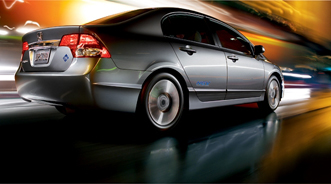Exactly How Much Bigger Are Compact Vehicles Nowadays?

Veteran dealers understand compact vehicles just aren’t as small as they used to be. Recent analysis by Edmunds.com of units dating back 20 years created specific numbers to back up the assessment.
The site revealed Tuesday that on average compact vehicles weigh 549 pounds more, have 61 more horsepower and have a 6.4-inch longer wheelbase than they did in 1990. Still, Edmunds.com calculated vehicles in this segment get 2.5 more miles per gallon in combined fuel economy estimates because of improvements in engine technology.
So far in 2010, site analysts determined about 20 percent of all new vehicles sold in the U.S. have been small units. That penetration is up from 17 percent in 2006.
Edmunds.com also projects that sales in the small-vehicle segment will steadily increase with a 23.2 percent market share forecasted in 2014.
“Small cars appeal to buyers on a budget, to the environmentally conscious, to growing numbers of empty-nesters and to the legislators pushing for improved fuel economy from automakers — and yet consumer expectations inspire automakers to make smaller cars more powerful and more functional,” Edmunds.com offered.
Bill Visnic, senior editor of Edmunds’ AutoObserver.com, elaborated on the broad assessment site analysts gave this vehicle segment.
“Over the years, consumer demand has increased for small cars that have more features and are more versatile in carrying passengers and cargo,” Visnic explained.
“Those consumer-driven desires, together with the regulatory drive for enhanced safety equipment, have led to size and weight increases,” he added.
Edmunds.com consumer advice associate Ronald Montoya also shared view that dealers could present to compact-vehicle shoppers.
“Stepping down a car class can often mean increased fuel economy with no real loss of space,” Montoya stated.

 View The Latest Edition
View The Latest Edition

